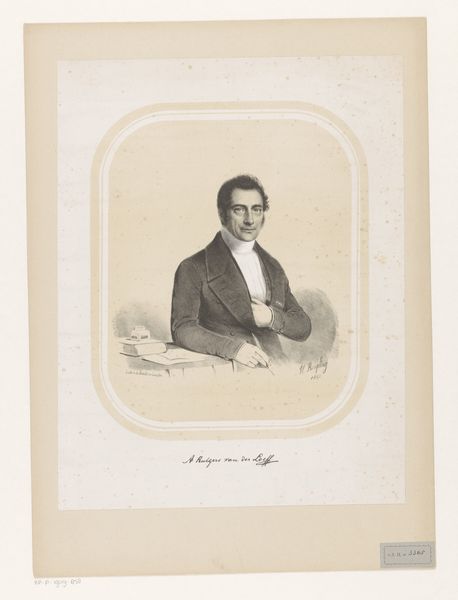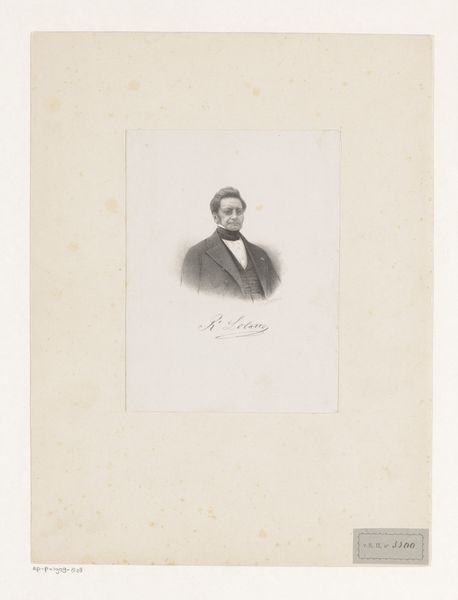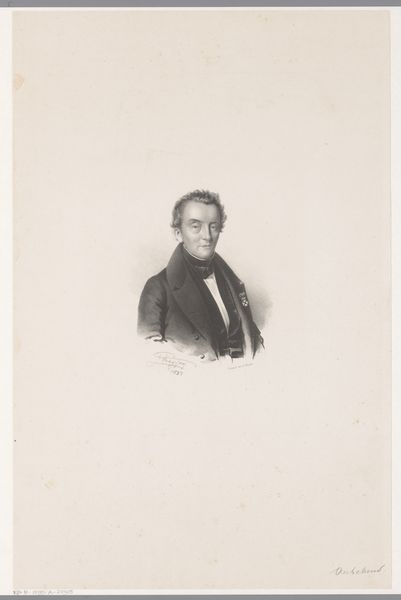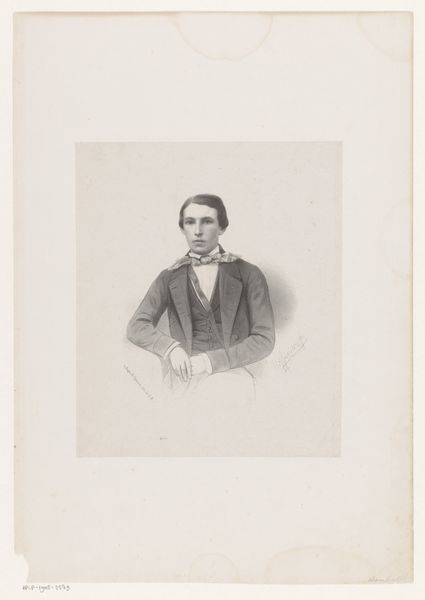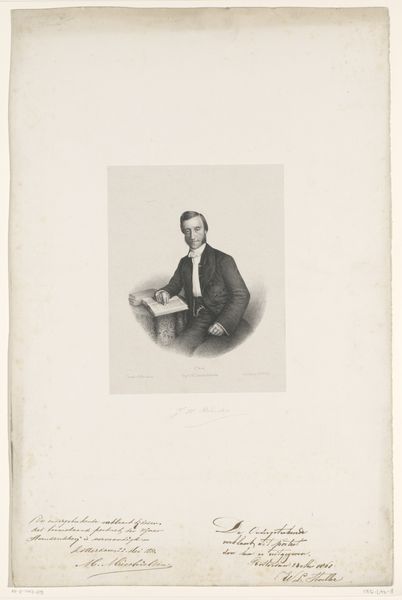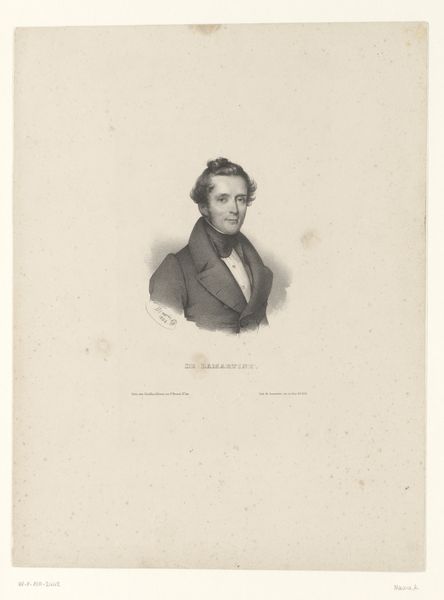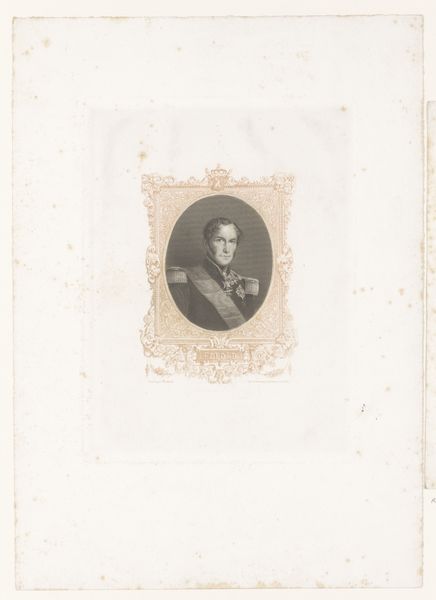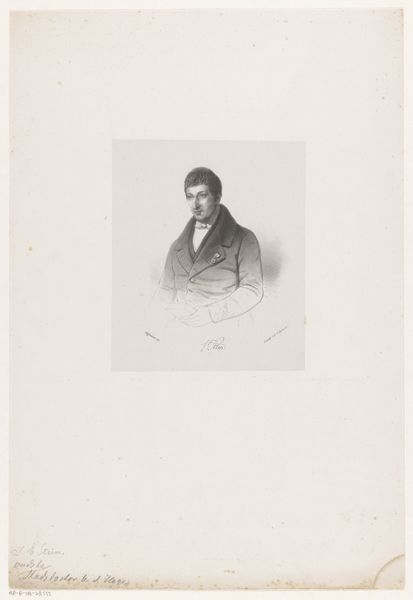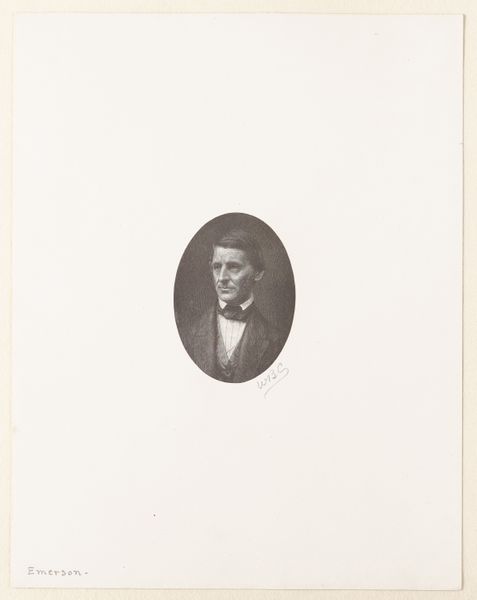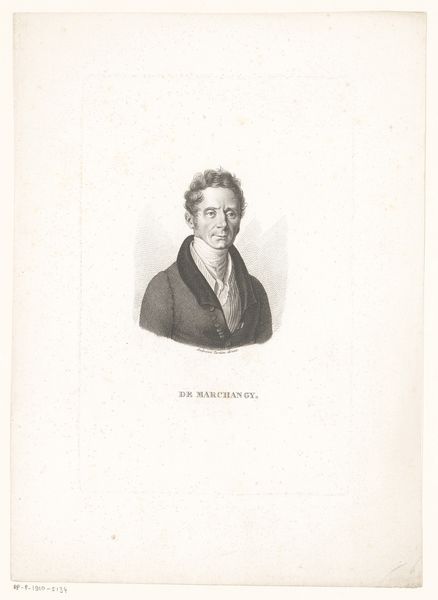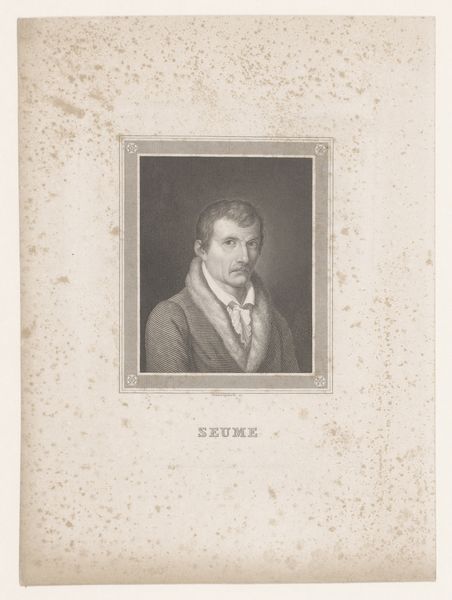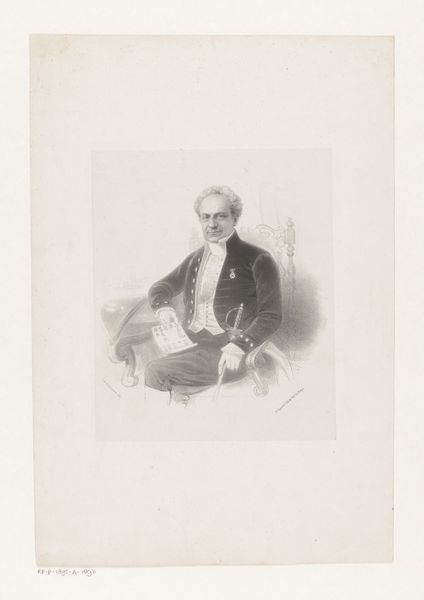
drawing, lithograph, print, paper, graphite
#
portrait
#
drawing
#
lithograph
# print
#
paper
#
graphite
#
realism
Dimensions: height 364 mm, width 274 mm
Copyright: Rijks Museum: Open Domain
Editor: This is a lithograph by Hendrik Wilhelmus Last, "Portrait of Abraham Capadose," created in 1851. It’s a very traditional-looking portrait, all done in graphite on paper. What strikes me is how detailed the rendering is. What can you tell me about it? Curator: Well, considering Last's choice of lithography, let’s think about the means of production. Lithography, as a printmaking process, allowed for relatively easy reproduction. This suggests the possibility of wider distribution, catering to a burgeoning middle class in the 19th century eager for affordable portraits. Editor: So, it’s not just a portrait of an individual, but a reflection of the changing social landscape? Curator: Precisely. What's fascinating is the material transformation. Think of the shift from unique painted portraits commissioned by the elite to these reproducible lithographs. It reflects the democratization of art consumption. Consider the labor involved, not just Last’s skill, but also the network of printers, distributors, and retailers bringing art to a wider audience. Editor: I hadn’t thought of it in terms of labor. It sounds like the industrial revolution changed not just the art itself, but also how it’s consumed. Curator: Absolutely. Look at the texture of the paper itself, a mass-produced material facilitating this transformation. How does this materiality change our understanding of artistic value, when the "original" can be endlessly replicated? And consider Abraham Capadose; who was he, and what did it mean to have his image circulated in this way? Was it purely commemorative, or did it serve other purposes in the burgeoning print culture? Editor: Thinking about it this way really broadens my understanding of the piece. It's no longer just a static image. Curator: Indeed. By examining the materials and production, we uncover the social and economic forces shaping its creation and reception. A seemingly straightforward portrait reveals complex layers of meaning related to production and consumption. Editor: Thanks, I hadn’t thought about those layers. I’m going to look at art materials in a new light from now on.
Comments
No comments
Be the first to comment and join the conversation on the ultimate creative platform.
